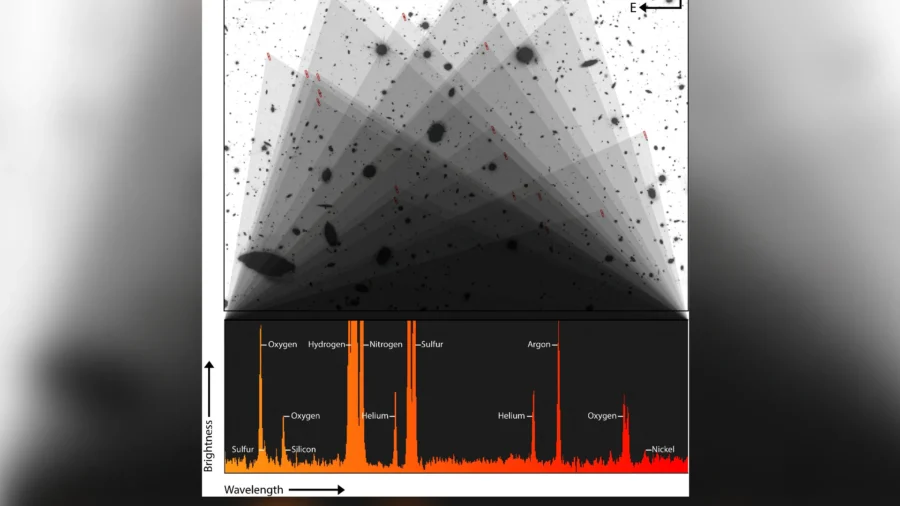WASHINGTON—Since becoming operational last year, the James Webb Space Telescope has made groundbreaking observations involving some of the universe’s earliest galaxies. One might call them galactic infants.
But Webb has obtained even better data on galaxies a bit further along in development. Astronomers call these the galactic “teenagers.” And, as new research shows, they resemble human teenagers in certain respects, including by displaying growth spurts along with a bit of immaturity.
The researchers focused on galaxies that formed billions of years ago. The study averaged data obtained by Webb on light across various wavelengths emanating from 23 such galaxies—their “chemical DNA”—to paint a composite picture of teenage galactic characteristics.
“These teenage galaxies have very unique chemical DNA, which indicates that they have formed a decent number of stars—they’re fairly grown already—but still growing rapidly,” said Allison Strom, a professor of physics and astronomy at Northwestern University in Illinois and lead author of the study published this week in the Astrophysical Journal Letters.
These galaxies do not yet look or act the way galaxies do today, according to the researchers.
“They go through some important processes around this time—many of which we don’t yet understand and hope to soon understand better—which sets what type of galaxy they will become,” said astronomer and study co-leader Gwen Rudie of Carnegie Observatories in California.
The gas detected in star-forming regions—stellar nurseries—of teenage galaxies was much hotter, at about 24,000 degrees Fahrenheit (13,350 degrees Celsius), than observed in galaxies today.
“The temperature in these parts of galaxies is dominated by the young stars and the properties of the gas, so finding a different temperature means that there is something different about the stars and gas in the teenage galaxies,” Ms. Strom said.
The galaxies were observed glowing with eight elements—hydrogen, helium, oxygen, nitrogen, sulfur, argon, nickel, and silicon.
“Oxygen is noteworthy because it’s one of the most important components of ‘galaxy DNA,’ in terms of tracking past growth. Incidentally, oxygen is also the third-most abundant element in the universe (behind hydrogen and helium),” Ms. Strom said.
“The nickel was surprising because, even though we expected some amount of nickel might be present, it usually does not glow brightly enough to see it even in very-nearby galaxies. So seeing it was a surprise and may indicate that there is something different about the massive stars that cause the gas to glow,” Ms. Strom added.
Ms. Rudie said more than just these eight elements probably exist within these galaxies but have not yet been detected.
“Because elements heavier than hydrogen and helium are predominantly formed in stars, knowing what galaxies are made of tells us about how many stars they formed in the past and how quickly that happened,” Ms. Strom said.
The findings, Ms. Strom added, “point toward a picture where these galaxies are still chemically ‘immature’ and are forming very quickly.”
Webb, which was launched in 2021 and began collecting data last year, has reshaped the understanding of the early universe.
The new study presents the first results from the CECILIA Survey that uses Webb to scrutinize the chemistry of distant galaxies. The name CECILIA is short for Chemical Evolution Constrained using Ionized Lines in Interstellar Aurorae, while also honoring trail-blazing 20th century astronomer Cecilia Payne-Gaposchkin.
“There has rightfully been a lot of excitement about how Webb has enabled us to view some of the very first galaxies, but even with Webb our ability to say much about those galaxies is limited,” Ms. Strom said. “At the same time, the telescope is letting us observe galaxies a little later in the universe’s history in a stupendous amount of detail, and CECILIA is the first and, so far, best example of this.”

